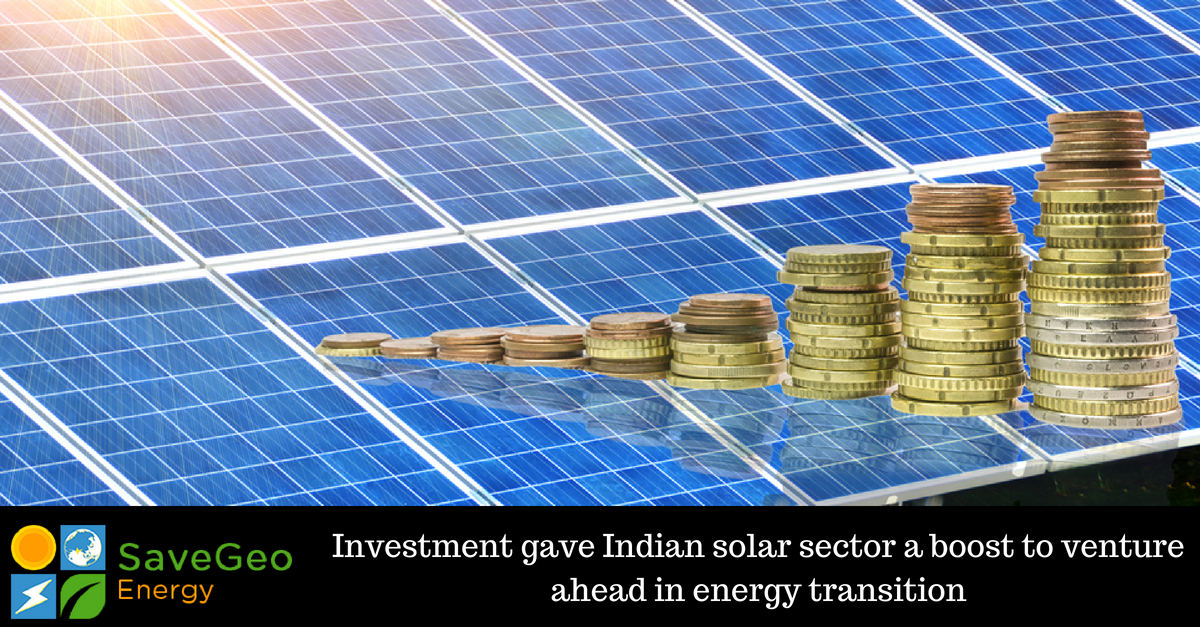Investment Scenario is the Driving Growth in Indian Solar Power Sector
In recent years the growth of the solar power sector has quadrupled with the help of Government-backed policies and financial aids. In the preceding year, Indian solar industry standing at a cumulative 10 GW energy capacity has recently made the 100 GW by 2022 goal more tangible than ever. In comparison to May 2014, with India having only 2.6 GW solar capacity, the growth rate solar power system in recent times is quite commendable.
Indian Government has played a significant role in creating soaring global solar acceptance and support scenario. Nevertheless, to venture ahead into energy transition without having a robust industrial infrastructure, it is the investment that gave Indian solar sector a much-required boost. Indian solar power sector at present have around 14 GW of solar projects which are under development, and more than 6 GW capacity projects are about to be auctioned.
And under state policy the capacity addition mandates shows Maharashtra to get 7.5 GW by 2019, Andhra Pradesh to get 5 GW by March 2020, Karnataka to reach 2 GW by 2021, Haryana to reach 1.3 GW by 2022 and more promise states promises the growth in the solar power sector. Indian solar structure is assisted to grow with initiatives like additional one-time allowance, tax-free grants, subsidies and rebates on capital expenditures. These initiative have also brought in investments into the sector as well. However, to support this incredible growth, finance is a must.
Eventually, the potential of generating solar energy in India is expected to attract USD 100 billion investment. Within five to ten years, around 293 global and domestic companies currently have committed to invest around USD 310-350 billion to set up a cumulative capacity of 266 GW in sectors like solar energy, biomass-based power, wind energy and mini-hydel.
Within foreign investment, India from the year 2000-16 has attracted around USD 10.48 billion. Moreover, to present a better financing model for Grid-Connected Rooftop Photovoltic Solar (GRPV) projects in India, State Bank of India has signed an agreement with The World Bank for INR 4,200 crore credit facility. Additionally, to support development and future of the Indian solar industry, The World Bank Group has also committed USD 1 billion. To improve floating solar projects in Maharashtra, Kerala and other potential states, The Ministry of New and Renewable Energy (MNRE) had also signed an agreement committing USD 44.7 million with Germany-based KFW Development Bank.
To bridge the energy generation deficit that is suspected to stand at 5.2 per cent in the next ten years, investment is needed to reach 100 GW capacity installation target. With the continuous fall in the solar energy tariff, in spite of investment pouring in, can present the project profitability question and drive away the potential investors. In addition to this, it is becoming challenging for the investors to put their money in Indian solar sector due to issues like lack of land availability, delays in awarding projects, power evacuation challenges, confusion in policy, lack of skilled labour, and operation & maintenance facilities.
However, the country claims a pole position as an energy-rich country and can ultimately lead the world by example, if India starts to focus on fixing the existing issues. Indeed, this is the right time for growth as global acceptance towards solar is on the rise.
SaveGeo Energy – a growing integrated Solar EPC Solutions Provider, based in India provides high quality solar photovoltaic solutions to global clients. Driven by a singular vision – harnessing the power of the sun to enable solar everywhere, our solutions are built to support a more sustainable and independent green energy future.



